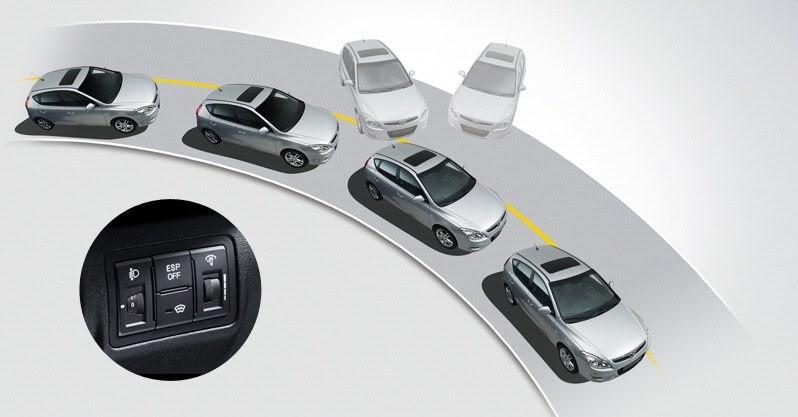2021-11-01 | Bridgestone Team
WHAT IS AN ELECTRONIC STABILITY PROGRAM?
To ensure a smooth and safe operation, cars are equipped with a variety of driver-assistance systems. In which, the car electronic stability program (ESP) helps to minimize the situations of loss of control, loss of balance leading to dangerous car accidents. Find out more about the principle of operation and how to use the ESP with Bridgestone.
1. What is an Electronic Stability Program?
Electronic Stability Program (ESP) - This system is also known as ESC (Electronic Stability Control) or DSC (Dynamic Stability Control) depending on how each car company is identified. Electronic Stability Program was previously reserved for high-end vehicles but is now common in most commercial vehicles. ESP technology works to help the vehicle achieve safety standards, keeping the vehicle balanced and stable, preventing loss of control, leading to a rollover or other accidents.
2. How does a car's Electronic Stability Program work?
The principle of the operation of electronic stability program is based on sensors installed on the vehicle such as steering wheel speed sensor, rotation sensor, steering angle sensor, brake pressure sensor. Initially, the standard parameters will be installed into the central processor, used to compare with the actual data when the vehicle is moving. When traveling, the car's electronic stability program will collect actual data, send signals to the control system for analysis and evaluation. If the actual data exceeds the allowable threshold such as the vehicle turning angle exceeding the steering angle, the ESP system will be activated and intervene. The ESP combines with ABS systems (anti-lock braking system) to adjust the rotation angle, reduce speed, brake one or more wheels to bring the vehicle to a state of balance, reduce slippage, rotation, and prevent accidents.

ESP technology helps the car achieve safety standards, keeping the car balanced when moving.
3. Why is a car's electronic stability program necessary?
According to statistics, accident cases are often caused by losing control or not being able to control the wheel speed. Usually, when the car goes through sharp turns or the driver suddenly steers to avoid obstacles in front, the car often turns around, the car's head or tail is thrown off, and changes direction without the driver's intention. The car's electronic stability program will be effective and is necessary for the above situations because of its ability to sense and intervene in time. ESP will adjust the speed of each wheel or apply force to each wheel to help the vehicle return to a normal trajectory

Thanks to sensors, the car's electronic stability program intervenes in time.
In case the wheel is locked, sudden braking also leads to wheel slip. At this time, ESP together with ABS (anti-lock braking system) automatically click and release the brakes, helping the wheels to be braked safely. When the vehicle needs to brake quickly but the driver does not apply enough braking force, the electronic balance system will add more force. In this way, the vehicle reduces the force of collisions with obstacles in front.
4. How to use a car's electronic stability program effectively:
If your vehicle already has an electronic stability program, when the key is turned on, the ESP indicator will light up. Or on the car, there is always a switch used to disconnect the operation mode of the ESP. However, drivers are encouraged to leave the electronic stability program in active mode to ensure safety on the whole journey.
For the electronic stability program to work effectively, the driver also needs to be careful not to let the tires wear excessively or the tire pressure is not up to standard. At this time, the wheel's grip ability decreases, and the ESP system will not work.
Currently, all car models with tires from Bridgestone are equipped with an electronic stability program to help drivers reduce the risk when steering suddenly or turning sharply, ensuring the safety of the driver as well as protecting and preserving the parts on the car.
-
What Are All Season Tires?
What Are All Season Tires?
For drivers who want versatile performance year-round, all season tires are made out of rubber composite compounds that are formulated to perform well under a wide range of weather and temperature conditions.
Learn More -
Winter and Snow Tires
Winter and Snow Tires
If you live in an area that experiences snowy or icy conditions in the winter months, hitting the road means paying close attention to conditions and adjusting your driving accordingly. But possibly the most important thing to do is install winter or snow tires.
Learn More -
Winter Driving Safety Tips
Winter Driving Safety Tips
As the weather turns cold, are you prepared to face the hazards of winter driving? Brush up on your winter driving skills each year and remember these easy winter driving tips.
Learn More